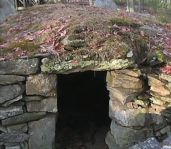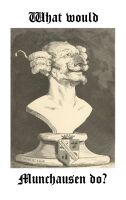|
by Dora van Gelder  A fascinating peek into the world of nature spirits
A fascinating peek into the world of nature spirits
This book is a theosophically based treatment of the fairies, which in this case means those members of the spirit kingdom generally associated with the processes of nature, and which are more evolved than the elementals, but lower on the chain of being than the angels. They are also the most like humans, and the most interested in our species of all the elementals. Van Gelder uses scientific methodology to describe this branch of the spirit world, in particular when she discusses the anatomy and composition of the fairy body, and in her taxonomy of the different species of fairy. As she says, there are more fairies than she can classify in this book, but her work will someday be the blueprint for a more thorough treatment of the group. It was these sections which interested me the most: Van Gelder's descriptions of the different fairies show the evidence of a sort of evolutionary process akin to the development of various features in similar animals. Just as the desert fox has evolved long ears to radiate heat away from its body, while the arctic fox has shorter ears to reduce heat loss, so too have the fairies developed or been designed--the author does not make clear which--to fit into their environments. The wood and garden fairies are a case in point. In New England they are green-bodied with a tan face, matching the surrounding terrain; in Florida their scarlet and purple bodies blend in with the tropical vegetation, while in California they favor gold and pastels, in keeping with the pastoral shades common here. These patterns reflect beautifully the order of the universe. Aside from a description of the basic fairy body, the book also includes chapters on the basic fairy groups, which include earth, garden, tree, mountain, water, fire, and air fairies. In each chapter Van Gelder gives a description of and outlines the activities of the various types of fairy, and connects them, if possible, with their counterparts in our folklore. This last point raises an interesting question: are the fairies that she describes actual beings, or are they merely her projections onto energy which flows throughout the world? I suspect it is the former, but she does not provide a definite answer. In any case, she explains how one can begin to see them (I have been inspired to attempt this recently, and have had already had some success!) and how important they are to our planet's survival. This last point is the most important feature of this book. We are part of a huge organism which materialist science sees as an inanimate lump of clay; in fact the earth is the mother of us all, and we are in danger of destroying her, ourselves, and the rest of her children as well. The fairies wish us to preserve our connection with the earth; only by reestablishing contact with the spirit kingdom and keeping that awareness in our minds on a daily basis can we avoid that doom which awaits us if we do not take care of the earth. The future of our species and our home, and the home of all the other creatures on the planet, spiritual and material, are in danger, and this book, in its own way, can help lead us out of our present straits and back onto the right path. And how often is work of such import so much fun? By merely trying to see those nature spirits which are all around us, and seeing their games and the pleasure that they take in their work, we can make a change for the better for the entire planet! We can only hope that it is not too late to prevent the destruction of the entire ecosphere. |

